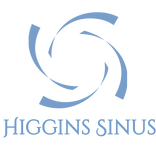Inferior Turbinate Hypertrophy
The inability to breathe through the nose is unpleasant. The inferior turbinates are often a reason.
What is Inferior Turbinate Hypertrophy?
The inability to breathe through the nose is plain unpleasant. While many people know about nasal septal deviations causing difficulty breathing, fewer have heard of a potentially more common condition called inferior turbinate hypertrophy. Ever wonder why you can breathe through the nose at certain times, but as soon as your allergies act up or you get a Common Cold, you no longer can breathe? Well, the extent of deviation of the septum most likely did not change, but size of inferior turbinates did (called inferior turbinate hypertrophy).
What are the nasal turbinates?
The nasal turbinates are snailshell-like structures in the nasal cavities. Three, occasionally four, sets of turbinates exist and have differing functions.
- Inferior Turbinates. The inferior turbinates are located along the floor of the nasal cavities, extending from the front of the nose to the back. These structures regulate the nasal cycle and play a large role in the sensation of nasal congestion.
- Middle Turbinates. The middle turbinates are located next to the “middle meatus,” a space that includes the most common locations for drainage of the maxillary, ethmoid, and frontal sinuses. These turbinates regulate airflow patterns, containing sensory fibers that contribute to sneezing, and contain some of the olfactory (smelling) nerve fibers. A middle turbinate may contain an air cell within it, called a concha bullosa, that can occupy extra space in the middle meatus and contribute to congestion in the area next to the sinus openings.
- Superior Turbinates. The superior turbinates are smaller than the inferior or middle turbinates and are located just behind and above the middle turbinates. These turbinates also contain olfactory nerve fibers. They typically attach beside the opening to the sphenoid sinus. Occasionally, people have supreme turbinates as well but they are much rarer.
What is the function of the Inferior Turbinates?
As the inferior turbinates help filter the air through the nose, they expand and contract depending on environmental exposures and the body’s internal regulation. The change in size of the inferior turbinates have a normal function in creating the nasal cycle. Have you ever notice that at one point you feel congestion on one side of the nose and a little later the congestion jumps to the other side? This is the normal nasal cycle and occurs regularly throughout the day and night.
Allergies and irritants inhaled from the air, however, can cause the inferior turbinates to swell. The nasal airways then become congested and obstruct the nasal breathing abnormally.
The term “inferior turbinate hypertrophy” is this process of abnormal swelling of the inferior turbinates that persists over time. A nasal septal deviation, if also present, narrows the space even further. Interestingly, many people will notice more difficulty breathing on the side opposite the deviated septum, which can be quite confusing to the individual. But, the reason for their obstruction is “inferior turbinate hypertrophy” on that opposite side, not the septal deviation!
What is the treatment for inferior turbinate hypertrophy?
The first step in treating inferior turbinate hypertrophy is taking medications that reduce the inflammation in the nose.
- Nasal Steroid Sprays (Nasacort, Flonase, etc.) and Antihistamine Sprays (Astepro, Patanase, etc.). These sprays are great first-line medications with consistent benefit and little side effects. They act deep in the cells of the inferior turbinates to counteract the inflammation caused by allergies and irritants. Often, this may be the only therapy you need!
- Nasal Decongestants. Both pill and spray forms quickly work on the blood vessels to open the nasal passages. These medications are typically not long-term solutions, however; the pill form has a risk of increasing the blood pressure, while the spray form can be addicting to the nose.
What is inferior turbinate surgery?
There are several minimally invasive procedures available for this condition. They can be performed alone or along with septoplasty and/or
sinus surgery. Dr. Thomas Higgins is able to perform all of these techniques for inferior turbinate hypertrophy, so feel free to ask which technique may be best for your situation! Typically, no packing is used with minimal discomfort and quick recovery.
Submucosal Resection of the Inferior Turbinates
While this technique used be quite difficult in the past, the microdebrider has made this procedure well tolerated both awake and, if necessary or requested, under general anesthesia. The inferior turbinates are numbed and a small device with an oscillating blade is inserted into the erectile tissue (“submucosa”) within the turbinates. Some of the inside tissue is removed, to reduce its size while leaving the function mucosal lining. This allows effective reduction of the size of the turbinates while maintaining it function. The procedure typically results in minimal pain and a quick recovery. This method has also been shown in studies to having lasting improvement in nasal breathing.
Cauterization of the Inferior Turbinates | Coblation of the Inferior Turbinates | Laser Excision of the Inferior Turbinates | Radiofrequency Ablation of Inferior Turbinates
These techniques, while having different names, are variations of a similar technique. This procedure is also well tolerated both awake or, if necessary or requested, under general anesthesia. Once the nose is numbed, a wand-like device is inserted into the inferior turbinates and the erectile (submucosal) tissue is used to burn the tissue inside the inferior turbinates. These techniques effectively improve nasal breathing. Studies have tended show that the duration of symptom relief can be shorter than the submucosal resection technique. The recovery is usually quick with minimal pain.
Partial or Complete Inferior Turbinate Resection
This procedure is the most aggressive of the techniques for inferior turbinate reduction. It is typically reserved for special situations, such as providing access for management of complicated sinusitis or tumor removal (in performing expanded endoscopic procedures). The technique, in general, requires complete anesthesia. Specially-designed scissors are used to used to cut the attachments of the inferior turbinate from the nasal wall. Usually, the front part of the inferior turbinate is left intact to help maintain some of the functional aspects of the inferior turbinates. This method can certainly increase the nasal airway and improve breathing; however, this method has a higher risk of contributing to a rare condition called “Empty Nose Syndrome.” This condition is thought to be due to a change in the sensation of airflow due to loss of the inferior turbinate’s sensory fibers in that the person has a paradoxical sensation of nasal congestion despite no physical obstruction being present. Interestingly and fortunately, only a very small percentage of people undergoing complete inferior turbinate resection tend to develop this condition. Ongoing investigation is evaluating the pathophysiology and possible treatment options for this debilitation condition.
Inferior Turbinate Out-fracture
This technique is a quick procedure that can be performed awake or asleep. After the nose is numbed, an instrument is used to push the inferior turbinate to the side of the nose. The small bone within the inferior turbinate is micro-fractured to provide more room in the nasal passages. Despite its namesake, it is nothing like “breaking the nose” and is actually well tolerated with minimal pain or discomfort. This procedure can be performed in conjunction with the other procedures previously mentioned. Unfortunately, the procedure performed by itself usually does not result in long-term symptom improvement as the inferior turbinate will often realign to its previous position.





